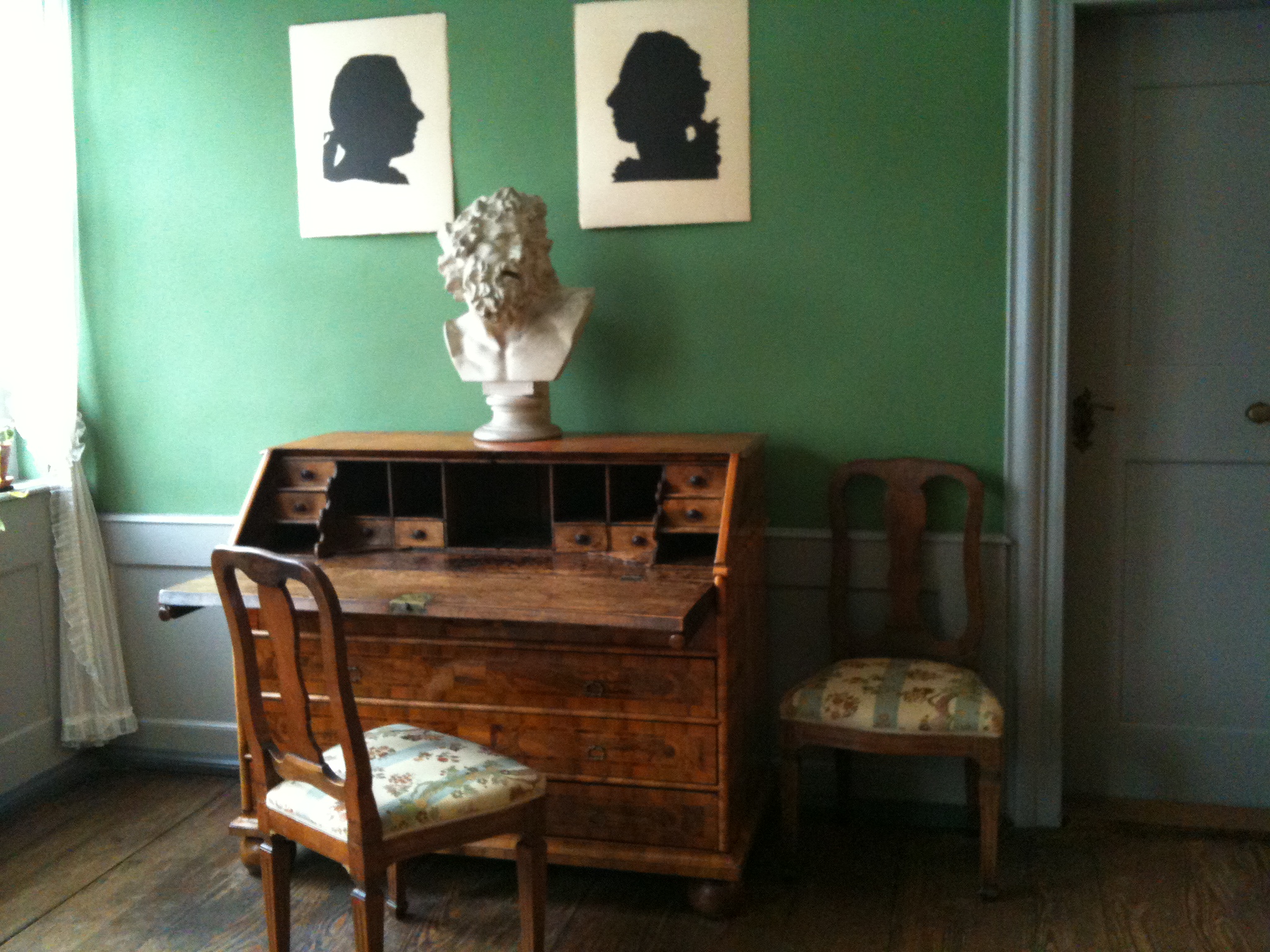Study English: Intermediate
ESL
Read the Story and Answer the Questions. Practice with Vocabulary.
Goethe and Poetry

1. This picture shows the desk of Johann Wolfgang Goethe (say yoh-hahn vawlf-gahng ger-tuh), a famous German poet. He wrote a monumental
poem called Faust (say foust). This poem is about a man who sells his
soul to the devil to gain secret powers. This was already an old story
when Goethe wrote the poem. Goethe used this basic idea to convey human nature: how people think, the desires that people have and consequences that can result.
2. People began creating poetry thousands of years ago. In ancient times, many people could not read or write. The rhythms
and rhyme of poetry helped people to remember and pass on old stories.
Even in Goethe's time (1749 - 1832), many people who were not born into
families with money could not read and write. In the times when people
did not read, however, those who were gifted with language often had
excellent memories. Some people could remember poems with 100 lines or
more.
3. Different cultures prefered different styles. Rhyme was popular
because it helped people remember. With rhyme, the last word of each
phrase has the same final sounds, as in "face" and "race" or "fly" and
"sky." A good poet could write so that the rhyme did not seem forced.
Good poets also knew different ways of using rhyme. There are rhyming
couplets: this means that 2 lines rhyme. Also other patterns can be
used: maybe the 1st and the 4th line will rhyme while the 2nd and 3rd
line will be a rhyming couplet. Goethe used rhyme in Faust.
4. Some cultures liked alliteration instead of rhyme. This is when you
repeat the consonant sound, as in "big brown bear basking in bright
light." The repetition of the consonant sound also helped people to
remember. Scandinavians (the people from Sweden and Norway) prefered
alliteration in their old poems. The famous Old English poem from the
8th century, Beowulf, used a lot of alliteration.
5. Today, rhyme is much less popular. Many contemporary poets use both
alliteration and assonance. Assonance is the use of rhyming vowel
sounds. For instance, in "the crow flies by the high branches of the pine
tree," the words "flies," "high" and "pine" all use the Long I sound,
but they do not rhyme. Contemporary poets vary a lot. Some writers
imitate contemporary speech. They try to show the natural rhythms of
language by writing with sudden stops, like beats. Other writers use innovative variations of older styles. Even though today's poets usually do not use rhyme, they still endeavor to write poems that are lasting and memorable.
Answer the
questions:
1. What is the main idea of this passage?
A. Poetry is an ancient art and it changes with the times.
B. Poetry is an ancient art and it hasn't changed significantly.
C. When people could not read and write, they memorized poems.
D. Goethe was a famous German poet.
2. Why does the author write about Goethe?
A. Goethe is the main idea of the passage.
B. Goethe wrote Faust, a famous poem.
C. Goethe wrote about human nature.
D. Goethe is an example of a poet.
3. Which statement is an inference, not a fact?
A. Today, rhyme is less popular.
B. Today, many poets use assonance instead of rhyme in their poems.
C. Since most people can read and write today, rhyme is less popular.
D. Alliteration means using the same consonant repeatedly.
4. What is the difference between assonance and alliteration?
A. Assonance is about consonants and alliteration is about vowels.
B. Assonance is about vowels and alliteration is about consonants.
C. Assonance and alliteration are about the same.
D. Assonance is used in poetry and alliteration is not.
5. What is the difference between rhyme and rhythm?
A. Rhyme is about sound and rhythm is about the beat.
B. Rhyme is about the beat and rhythm is about sound.
C. Rhyme is used in poetry and rhythm is not.
D. Rhyme and rhythm are not different.
6. Match the words with their definitions:
monumental a. relate, express
convey
b. new,
hasn't been done before
rhythm
c.grand
innovative
d. staying/existing for a long
time
lasting
e. the
pattern of a beat
(answers
below)
answers:
1. a, 2. d, 3. c, 4. b , 5. a, 6. monumental: c, convey: a, rhythm: e, innovative: b, lasting: d
Copyright
2010: I.E. Tutoring/Speakmethod.com
